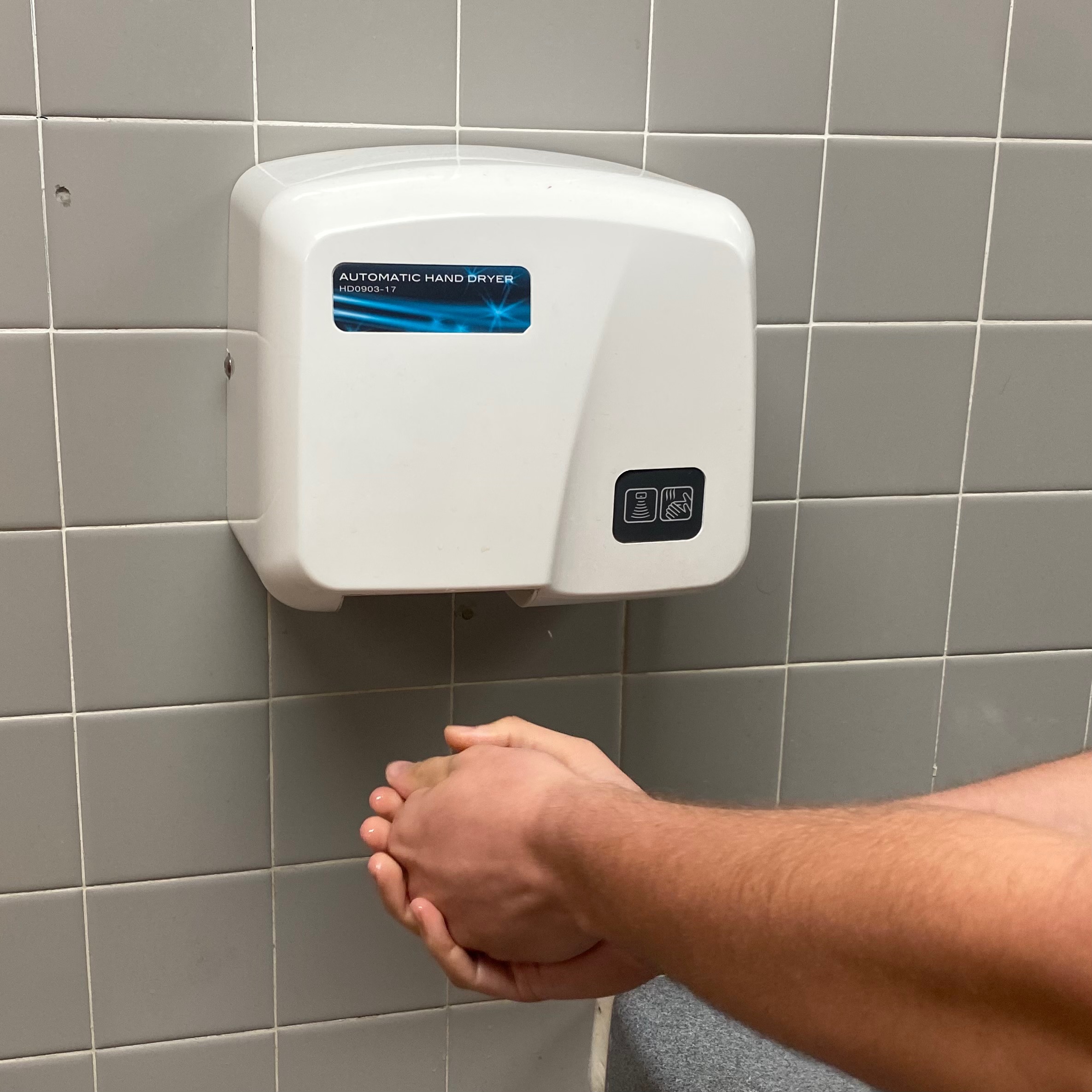By Johnny Inama
When most people think of a bathroom, they think of the thousands of germs spread throughout the room. From toilet seats, to floors, to handles, many germaphobes are disgusted by the sheer number of germs in the rooms. However, something that people may not associate with germs may actually be the largest spreader of germs in every bathroom: hand dryers.
The first ever hand dryer was patented on June 13, 1922 by R.B. Hibbard, D. J. Watrous, and J.G. Bassett, called the “Dryer Machine” where users would power the inverted blower with a foot pedal. However, many do not attribute their invention as the first hand dryer, as George Clemens’s “World Dryer” made in 1949 usually gets the credit for the first hand dryer as he was the first to popularize these machines when their popularity spiked following the creation of the World Dryer, according to atlasobscura.com. There were even inventions such as the rolling cloth, that continuously rolled the same cloth through a machine, making it even dirtier than the hand dryer, so it disappeared from most bathrooms. Still for several decades, air dryers struggled to become the standard method for drying hands, as paper towels reigned supreme with how inefficient hand dryers normally were. The hand dryers underwent many modifications and eventually it led to some of the most well-known versions today, such as the Dyson Airblade dB, the XLERATOR XL-SB, and even a modern version of the World Dryer.
While many see these hand dryers as a modern solution to drying hands, the bacteria that spreads through the machines might make one think again next time they see a hand dryer. According to health.harvard.edu, petri dishes exposed to regular bathroom air only grew one colony of bacteria, or many times none at all. But, the petri dishes held under a hand dryer for just thirty seconds produced up to 254 colonies of bacteria in the same amount of time as the petri dishes exposed to regular bathroom air. Hand dryers draw in bacteria from around the room, including fecal matter, and effectively spread the pathogens that people try to wash off right back on their hands, potentially making them dirtier than before they washed them.
Other than the problem of bacteria, the dryers are also very pricey, ranging from $300 to $1,900, compared to paper towels which cost an initial price of around $80, plus the cost to replace the holder with rolls. This is a main reason why many companies and schools choose paper towels. Ponte Vedra High School (PVHS) Maintenance Coordinator, Mr. Athanaseas, was very straightforward when asked about why PVHS has hand dryers. “They’re neater and cheaper,” said Mr. Athanaseas. Paper towels also bring another issue as “usually someone stuffs one down the toilet and clogs them up,” said Mr. Athanaseas.
Hand dryers are not only inefficient and inconvenient, but they also spread germs more than any other way of drying your hands. They are also far more expensive compared to paper towels, leading many to question why schools and businesses would spend hundreds or even thousands more for an inferior mode of drying hands.





